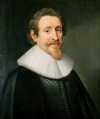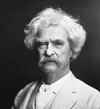I scored 78% -- time to brush up! At least the ones I got wrong were the ones that
I wavered on.
Post your score in the comments!
We need to forget what we think we are, so that we can become what we really are ~ Paulo Coelho
(Note: this makes me think of all kinds of other topics, such as why some people seem to find such experiences of 'loss of self' as frightening, while others do not. Another time...)When Baime meditated in Newberg's brain scanner, his brain mirrored those feelings. As expected, his frontal lobes lit up on the screen: Meditation is sheer concentration, after all. But what fascinated Newberg was that Baime's parietal lobes went dark.
"This is an area that normally takes our sensory information, tries to create for us a sense of ourselves and orient that self in the world," he explains. "When people lose their sense of self, feel a sense of oneness, a blurring of the boundary between self and other, we have found decreases in activity in that area."
Newberg found that result not only with Baime, but also with other monks he scanned. It was the same when he imaged the brains of Franciscan nuns praying and Sikhs chanting. They all felt the same oneness with the universe. When it comes to the brain, Newberg says, spiritual experience is spiritual experience.

raillery discuss | |
| Definition: | (noun) Light teasing repartee. |
| Synonyms: | backchat, banter, give-and-take |
| Usage: | Excitement instantly seized the whole party: a running fire of raillery and jests was proceeding when Sam returned. |
  The Ghost DanceThe Ghost Dance is the main ritual of a messianic religious movement that gained a widespread following among Native American groups in the American West during the late 19th century. The dance, which incorporates traditional circle dance rituals, was created by a member of the Paiute tribe known as Wovoka, who taught that it would hasten the ousting of whites, the restoration of traditional lands, and the resurrection of the dead. What role did the Ghost Dance play in the Wounded Knee massacre? More... Discuss |
  F. Scott Fitzgerald's The Great Gatsby Is Published (1925)Considered to be Fitzgerald's masterpiece, The Great Gatsby is a devastating critique of the American Dream and materialism at the height of the Roaring Twenties. It is the story of a bootlegger, Jay Gatsby, whose obsessive dream of wealth and lost love is destroyed by a corrupt reality. Today used as required reading in many high schools, the book has been cited as the paragon of the Great American Novel. Why did Fitzgerald dislike the title, and what did he want to call his novel? More... Discuss |
  Hugo Grotius (1583)Grotius was a Dutch jurist, philosopher, and writer. He enrolled at the University of Leiden at the age of 11 and became a lawyer at 15. Among his key legal treatises is the first definitive text on international law, On the Law of War and Peace, which prescribes rules for the conduct of war and advances the idea that nations are bound by natural law. In 1615, he became involved in a religious controversy that extended to politics and was eventually imprisoned. How did he escape? More... Discuss |
  Noise proves nothing. Often a hen who has merely laid an egg cackles as if she had laid an asteroid. Noise proves nothing. Often a hen who has merely laid an egg cackles as if she had laid an asteroid.Mark Twain (1835-1910) Discuss |